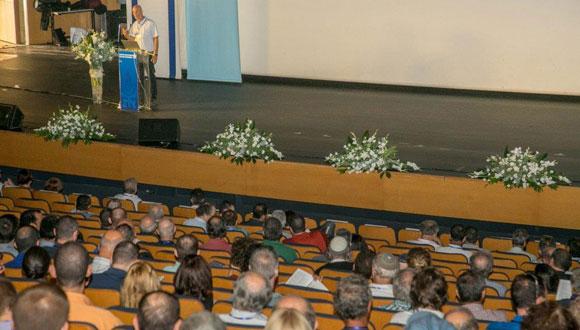Physics Colloquium: Scaling up single-atom spin qubits in silicon
Prof. Andrea Morello, UNSW Sydney, Australia
Abstract:
The modern information era is built on silicon nanoelectronic devices. The future quantum information era might be built on silicon too, if we succeed in controlling the interactions between individual spins hosted in silicon nanostructures.
Spins in silicon constitute excellent solid-state qubits, because of the weak spin-orbit coupling and the possibility to remove nuclear spins from the environment through 28Si isotopic enrichment. Substitutional 31P atoms in silicon behave approximately like hydrogen in vacuum, providing two spin 1/2 qubits -- the donor-bound electron and the 31P nucleus -- that can be coherently controlled [1,2], read out in single-shot [2,3], and are naturally coupled through the hyperfine interaction.
In isotopically-enriched 28Si, these single-atom qubits have demonstrated outstanding coherence times, up to 35 seconds for the nuclear spin [4], and 1-qubit gate fidelities well above 99.9% for both the electron and the nucleus [5]. The hyperfine coupling provides a built-in interaction to entangle the two qubits within one atom. The combined initialization, control and readout fidelities result in a violation of Bell’s inequality with S = 2.70, a record value for solid-state qubits [6].
Despite being identical atomic systems, 31P atoms can be addressed individually by locally modifying the hyperfine interaction through electrostatic gating [7]. Multi-qubit logic gates can be mediated either by the exchange interaction [8] or by electric dipole coupling [9].
Scaling up beyond a single atom presents formidable challenges, but provides a pathway to building quantum processors that are compatible with standard semiconductor fabrication, and retain a nanometric footprint, important for truly large-scale quantum computers.
[1] J.J. Pla et al., Nature 489, 541 (2012)
[2] J.J. Pla et al., Nature 496, 334 (2013)
[3] A. Morello et al., Nature 467, 687 (2010)
[4] J.T. Muhonen et al., Nature Nanotech. 9, 986 (2014)
[5] J.T. Muhonen et al., J. Phys.: Condens. Matt. 27, 154205 (2015)
[6] J.P. Dehollain et al., Nature Nanotech. 11, 242 (2016)
[7] A. Laucht et al., Science Advances 1, e1500022 (2015)
[8] R. Kalra et al., Phys. Rev. X 4, 021044 (2014)
[9] G. Tosi et al., Nature Communications 8:450 (2017)
Event Organizer: Prof. Alexander Palevsky


